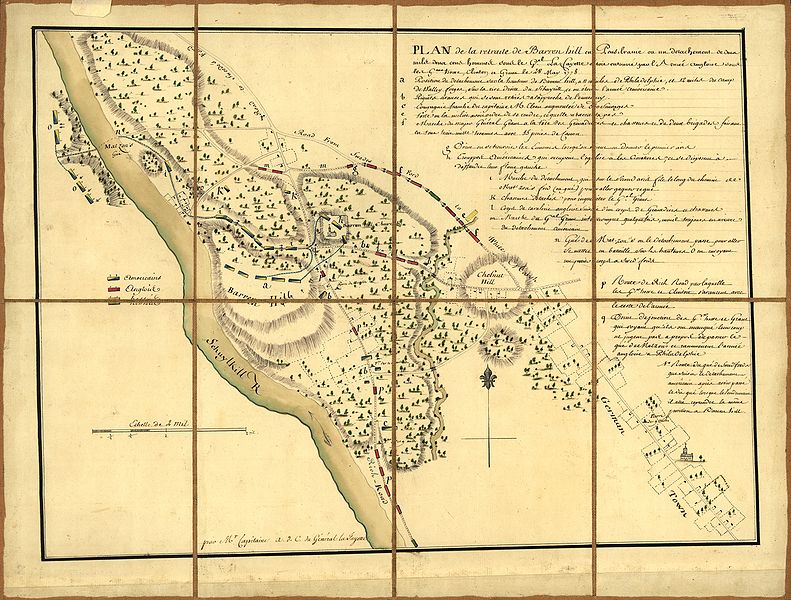 The Battle of Barren Hill occurred on May 20, 1778, during the American Revolutionary War. It was a relatively minor engagement with the British but could have had terrible consequences for the American forces. Due to quick thinking and good strategy, the Americans escaped what could have been a very deadly encounter. What was then known as Barren Hill is now Lafayette Hill in Pennsylvania. It was renamed for Major General Marquis de Lafayette, whose quick manipulation of troops saved many American lives.
The Battle of Barren Hill occurred on May 20, 1778, during the American Revolutionary War. It was a relatively minor engagement with the British but could have had terrible consequences for the American forces. Due to quick thinking and good strategy, the Americans escaped what could have been a very deadly encounter. What was then known as Barren Hill is now Lafayette Hill in Pennsylvania. It was renamed for Major General Marquis de Lafayette, whose quick manipulation of troops saved many American lives.
Information Gathering
General George Washington learned that British forces in Philadelphia were to return to New York City. Washington sent an information gathering force from his camp at Valley Forge to Philadelphia in order to learn more about the possible British retreat. Major General Marquis de Lafayette and his force were sent on this mission, taking position at Barren Hill, an area midway between the British and American armies.
Barren Hill Strategies
On May 18, 1778, Major General Lafayette positioned one brigade with guns, near a church on high ground, facing south. Another post was placed at Ridge Road, and another positioned to guard a road leading west from White Marsh. Hearing of this American position, on May 19, 1778, British Major General James Grant sent 5,000 men of the British forces toward Barren Hill.
The British planned to take the indirect route leading to the intersection of Ridge Road and White Marsh Road in order to cut off any route of retreat for the Americans. The American force would be encircled by the British from three sides, trapping them against the river. Because the British felt that their success was guaranteed, the attack was to wait until the next morning.
The Barren Hill Attack
The next morning, on May 20, 1778, the British launched their attack. The first American force that the British encountered scattered without resistance. The American force positioned on Ridge Road, learned of the British attack, and sent a small group to fight, delaying the British. While this small decoy was taking place, word of the attack was sent to Major General Lafayette.
Lafayette was aware of another small road, along low ground, which led to Matson’s Ford. This route would bypass the British forces, and also conceal the American forces. American forces were ordered to retreat using this road, and the rear guard was ordered to delay the British at the church. A few smaller American patrols were sent to make the British believe that the Americans were going to fight while Lafayette pulled back his American forces without incident. British troops did retain the field, but American Major General Lafayette’s maneuver to escape succeeded with few American casualties.